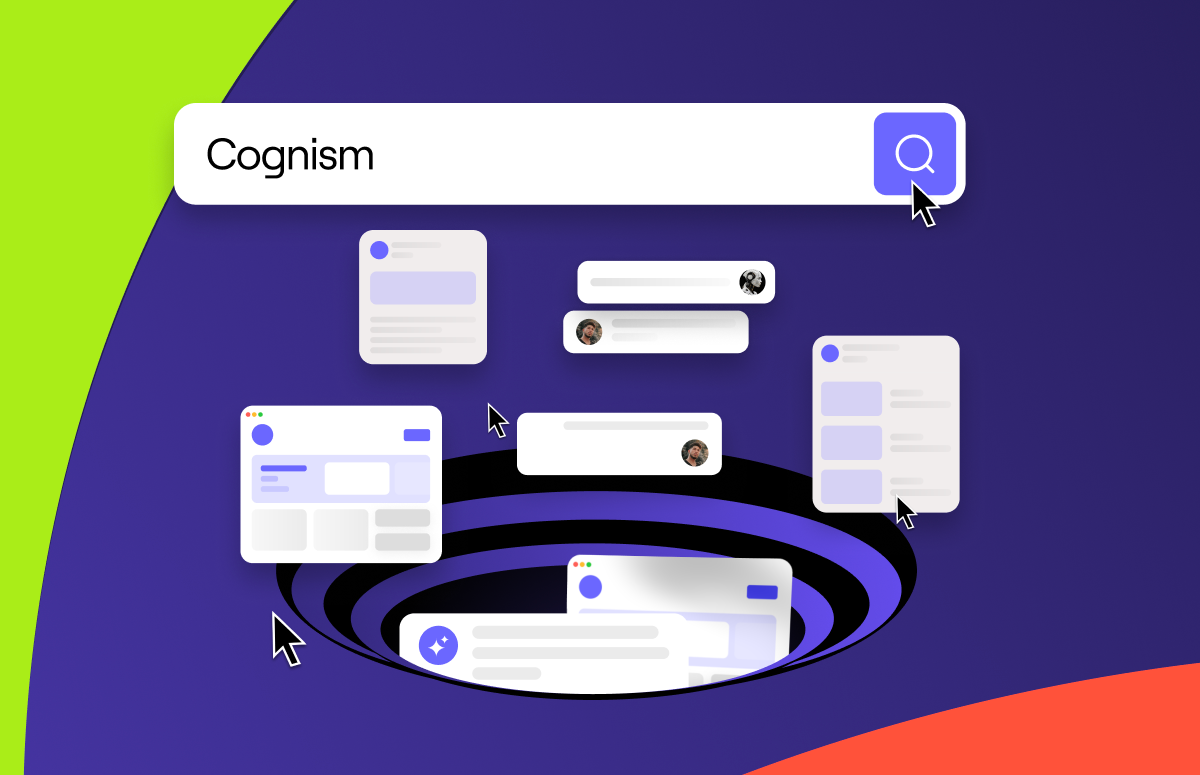12 Best Demand Generation Metrics to Track in 2025
Must-track demand generation metrics:
Want more marketing insights? Sign up for our bi-weekly newsletter 👇
Demand generation metrics focus on the early stages of the buyer’s journey. They measure how well your efforts generate awareness and interest in your product or service.
In the world of B2B marketing, measuring demand generation KPIs is critical for deploying precise, data-driven strategies that attract, engage, and convert your target audience into loyal customers.
Understanding the intricacies of demand generation can be complex, but the real challenge lies in measuring its effectiveness.
To help you convert potential prospects into long-term business partners, we’re taking a deep dive into the critical metrics that can make or break your demand generation efforts.
Let’s start 👇
1. Marketing Qualified Leads (MQLs)
Marketing qualified leads (MQLs) are potential customers who have shown interest in a company’s offerings through marketing efforts.
This could include:
- Downloading a white paper on a relevant industry topic.
- Attending a webinar on a new product feature.
- Requesting a demo of the company’s software.
- Signing up for a free trial.
These actions indicate that MQLs are more engaged than unqualified leads, who may have simply stumbled upon a company’s website through a general search or provided minimal information, such as an email address.
For instance:
An e-commerce company selling athletic wear might consider someone who downloads their guide to “Choosing the Right Running Shoes” an MQL, as this download demonstrates a specific interest in a product category and a potential need the company’s athletic wear can address.
By nurturing these MQLs with relevant content and personalised outreach, businesses can increase their chances of converting them into paying customers. MQLs are a crucial demand generation metric throughout the DG funnel - they help you understand how effectively your marketing efforts attract potential customers.
2. Sales Qualified Leads (SQLs)
Sales qualified leads (SQLs) are the golden tickets of lead generation, representing a vital demand generation funnel metric.
They are a subset of MQLs that the marketing and sales teams have further vetted.
These qualified leads are prime targets for sales outreach. They have expressed a strong interest in the product or service, and their needs and budget align well with the company’s offerings.
Companies often identify SQLs during the MQL stage. SQLs typically engage at a greater level than MQLs, providing more detailed information such as company size, budget range, and timeline for a purchase decision.
Want an example?
Imagine an MQL for a CRM software company downloads a case study on how a similar company improved its sales efficiency. Suppose this MQL schedules a demo and expresses a clear need to improve its sales pipeline within the next quarter. In that case, it might qualify as an SQL.
3. Cost Per Lead (CPL)
Cost per lead (CPL) is a demand generation KPI and metric that measures the total marketing and advertising spend divided by the number of new leads generated.
It helps you understand the efficiency of their lead generation efforts.
Suppose a company spends $10,000 on a social media advertising campaign that generates 200 qualified leads. Their CPL would be $50 per lead. A low CPL is desirable, but it’s essential to consider the quality of the leads as well.
Expensive, high-quality leads that convert into sales at a higher rate might be more valuable than cheaper leads that are less likely to convert.
4. Cost Per Acquisition (CPA)
Cost per acquisition (CPA) goes a step further than CPL. This is one of the most targeted B2B demand generation metrics. It considers the cost of acquiring a lead and the costs associated with converting that lead into a paying customer.
This might include sales team salaries, marketing automation tools to nurture leads or free trial costs.
If your company has a CPL of $20 but a CPA of $100, it means that your business is good at generating leads at a relatively low cost, and it takes additional investment to convert those leads into paying customers.
5. Customer Lifetime Value (CLV)
Customer lifetime value (CLV) estimates the total revenue a business can expect to generate from a single customer throughout its relationship with a company.
This takes into account factors like:
- Average purchase value (how much a customer spends on average per transaction).
- Repurchase frequency (how often a customer makes repeat purchases).
- Customer churn rate (the percentage of customers who stop doing business with the company over a specific period).
A high CLV is a key demand generation KPI that shows a healthy business model.
For instance, a subscription service with a high CLV might focus on customer retention strategies to keep existing customers happy and subscribed for longer.
6. Cost per Acquisition (CAC)
Cost per acquisition (CAC), another term for CPA, is a demand generation marketing metric that helps you understand how much you spend to acquire a new customer.
Knowing your CAC allows you to set appropriate marketing budgets and pricing strategies.
Think of a company selling handmade furniture with an average customer lifetime value of $1,000. If their CAC is $200, they know they can profitably spend up to $200 on marketing and sales efforts to acquire a new customer.
This would allow them to recoup their customer acquisition cost within the first purchase.
7. Return On Investment (ROI)
Return on investment (ROI) is a performance metric used to evaluate the effectiveness of a specific marketing campaign or initiative.
It measures the net profit or loss generated from the investment, expressed as a percentage. A positive ROI indicates that the campaign generates a return on the money spent.
If you spend $5,000 on a Google Ads campaign that generates $20,000 in sales, your ROI would be 300% ((revenue - cost) / cost * 100). ROI can be a helpful KPI for comparing the effectiveness of different marketing campaigns and allocating resources accordingly.
8. Activations & signups
Activations and signups are demand generation marketing metrics that track the number of users who have created accounts or activated their free trials.
They signify a basic level of interest in a product or service and indicate that users are willing to invest some time or effort to explore further.
While not all activations convert into paying customers, they are a leading indicator of potential sales.
Here’s an example:
A music streaming service might see a surge in activations during a free trial promotion. This would signal a successful marketing campaign and provide a pool of users who could become paying subscribers.
9. Close rate per channel
Close rate per channel examines the effectiveness of different marketing and sales channels. It does this by measuring the percentage of leads from each channel that converts into paying customers.
For example, you might compare the close rate for leads generated from social media advertising versus email marketing.
Social media might deliver a higher volume of leads, but email marketing might have a higher close rate because leads are more qualified and nurtured.
This demand generation metric helps businesses identify which channels deliver the highest quality leads. Then, they can optimise their marketing efforts accordingly.
Imagine a company that finds leads from webinars have a consistently high close rate compared to other channels. They might invest more resources in creating high-quality webinars for lead generation.
10. Marketing sourced pipeline
Marketing sourced pipeline refers to the total potential revenue from leads generated by marketing efforts in the sales pipeline.
It’s an important metric for understanding marketing’s contribution to the overall sales process. A healthy marketing-sourced pipeline indicates a strong flow of leads for the sales team to convert into customers.
For example:
A marketing team might set a goal of generating $100,000 in marketing sourced pipeline for the upcoming quarter. This would provide the sales team with a specific target of potential revenue to work towards.
11. Average deal size
The average deal size reflects the typical amount of revenue generated from a single customer transaction. It helps businesses forecast future revenue, set sales targets, and understand customer buying behaviour.
When setting KPIs for demand generation, remember that companies may have different average deal sizes for various product lines or customer segments.
For instance, you might have a lower average deal size for your tool’s basic subscription plan compared to its enterprise-level plan with more features.
12. Contribution to total revenue
Contribution to total revenue indicates the portion of a company’s overall revenue from a specific source, such as a particular marketing channel, product line, or customer segment.
By analysing contribution to total revenue, you can gain insights into which areas drive the most growth, empowering you to make more informed strategic decisions.
Here’s a real-world example:
If your business sees a new product line contributing significantly to total revenue, you can invest more resources in marketing and promoting it.
Demand generation metrics: key takeaways
If you want to understand the effectiveness of your B2B marketing efforts, then tracking demand generation funnel metrics is a must!
Tracking metrics such as activations, close rate per channel, marketing sourced pipeline, average deal size, and contribution to total revenue helps assess performance, identify areas for improvement, and make data-driven decisions to optimise demand generation strategies.
Businesses should set specific goals and targets for these metrics, regularly monitor and analyse their performance, and adjust as needed to drive success.
For example, if a business finds that a particular marketing channel consistently delivers high-quality leads with a high close rate, it may allocate more resources to that channel.
On the other hand, if a particular product line is not contributing significantly to total revenue, the company may decide to reevaluate its marketing strategy for that product.
Demand generation metrics are more than numbers; they guide your strategies toward sustainable success. By diligently tracking and analysing these key metrics, you gain invaluable insights into what resonates with your B2B target audience, where your campaigns excel, and where there’s room for improvement.
Cognism’s Demand Gen Playbook
Power your pipeline and watch your demand generation metrics soar with Cognism’s Demand Gen Playbook.
You’ll have access to:
Eight video modules talking you through our tried-and-proven DG framework. The same framework that’s helped us generate 55%+ of new business since 2021!
And it’s all FREE!
Click the banner to start 👇
/Demand%20Gen%20Metrics/Top-Demand-Generation-Metrics-to-Track-infographic.webp?width=672&height=1391&name=Top-Demand-Generation-Metrics-to-Track-infographic.webp)
/CTAs%20(SEO)/cognism-dg-playbook-cta-webp.webp?width=672&height=258&name=cognism-dg-playbook-cta-webp.webp)


